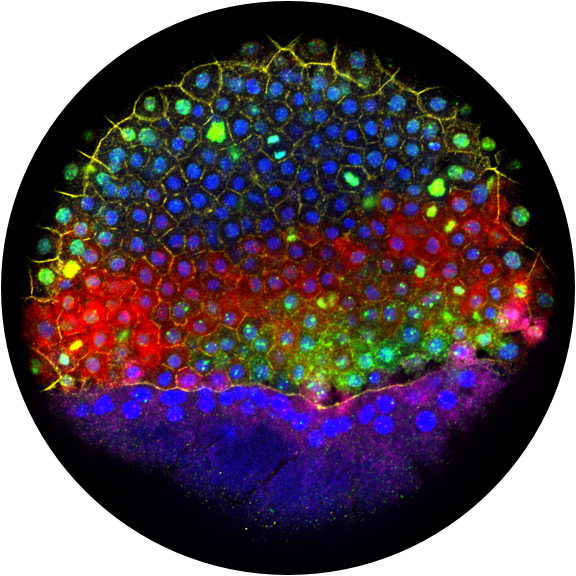Home
 Every embryo starts as a single, fertilized cell. It must then build itself into a complex collection of cells specialized for particular functions: light perception, oxygen transport, structural integrity, propagation of the next generation, and many others. How do embryos do this? What journey does each cell take as it transforms from a cell with many potentials into a differentiated cell with a specific identity and function? How are these transformations encoded in and coordinated by the genome?
Every embryo starts as a single, fertilized cell. It must then build itself into a complex collection of cells specialized for particular functions: light perception, oxygen transport, structural integrity, propagation of the next generation, and many others. How do embryos do this? What journey does each cell take as it transforms from a cell with many potentials into a differentiated cell with a specific identity and function? How are these transformations encoded in and coordinated by the genome?
In the Farrell Lab, we combine single-cell genomics, imaging, genetic, and classical embryological approaches to investigate how cell types are specified and then how cells differentiate during vertebrate embryogenesis. We focus on zebrafish embryos as a model system to study these questions, because among vertebrates, they are easy to culture, image, and manipulate both embryologically and genetically.
 BACK TO TOP
BACK TO TOP